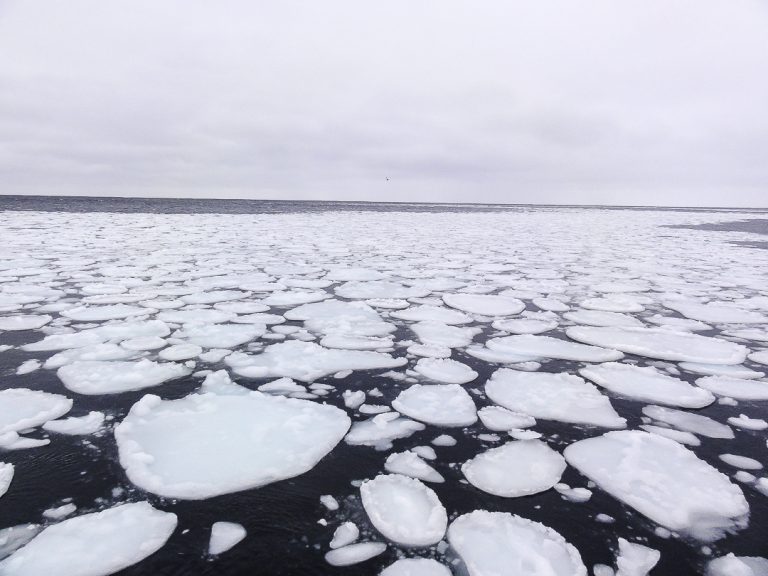A study in Geophysical Research Letters evaluates 40 recent climate models focusing on sea ice — the relatively thin layer of ice that forms on the surface of the ocean — around Antarctica. The study was coordinated and produced to inform the next Intergovernmental Panel on Climate Change report, due out in 2021.
All the models projected decreases in the aerial coverage of Antarctic sea ice over the 21st century under different greenhouse gas emission scenarios, but the amount of loss varied considerably between the emissions scenarios.
“I am really fascinated by Antarctic sea ice, which the models have struggled more with than Arctic sea ice,” said lead author Lettie Roach, a postdoctoral researcher at the University of Washington. “Not as many people are living near the Antarctic and there haven’t been as many measurements made in the Antarctic, making it hard to understand the recent changes in sea ice that we’ve observed through satellites.”
The models are known as coupled climate models, meaning they incorporate atmospheric, ocean, terrestrial and sea ice models to project what the future holds for our climate system. We are all familiar with the story of soon-to-be ice-free summers in the Arctic and the implications that may have on global trade. But what’s driving change around Antarctic sea ice and what’s expected in the future is less clear. This study’s assessment of Antarctic sea ice in the new climate models is among the first.
“This project arose from a couple of workshops that were polar climate centered, but no one was leading an Antarctic sea ice group,” said Roach. “I put my hand up and said I would do it. The opportunity to lead something like this was fun, and I’m grateful to collaborators across many institutions for co-creating this work.”
The Antarctic is characterized by extremes. The highest winds, largest glaciers and fastest ocean currents are all found there, and getting a handle on Antarctic sea ice, which annually grows and shrinks six-fold, is critically important. To put that into perspective, that area is roughly the size of Russia.
The icy parts of our planet — known as the cryosphere — have an enormous effect on regulating the global climate. By improving the simulation of Antarctic sea ice in models, scientists can increase their understanding of the climate system globally and how it will change over time. Better sea ice models also shed light on dynamics at play in the Southern Ocean surrounding Antarctica, which is a major component of our southern hemisphere.
“The previous generation of models was released around 2012,” says Roach. “We’ve been looking at all the new models released, and we are seeing improvements overall. The new simulations compare better to observations than we have seen before. There is a tightening up of model projections between this generation and the previous, and that is very good news.”
Co-authors of the recent study are Cecilia Bitz, professor of atmospheric sciences at the UW; Jakob Dörr at the University of Bergen; Caroline Holmes at the British Antarctic Survey; François Massonnet at Universite Catholique de Louvain; Edward Blockley at the U.K. Met Office; Dirk Notz at the University of Hamburg; Thomas Rackow at the Alfred Wegener Institute in Germany; Marilyn Raphael at the University of California, Los Angeles; Siobhan O’Farrell at the Commonwealth Scientific and Industrial Research Organisation in Australia; and David Bailey at Hamilton College in New York state. Funders of the research included the National Science Foundation and NOAA.
Original post https://alertarticles.info


